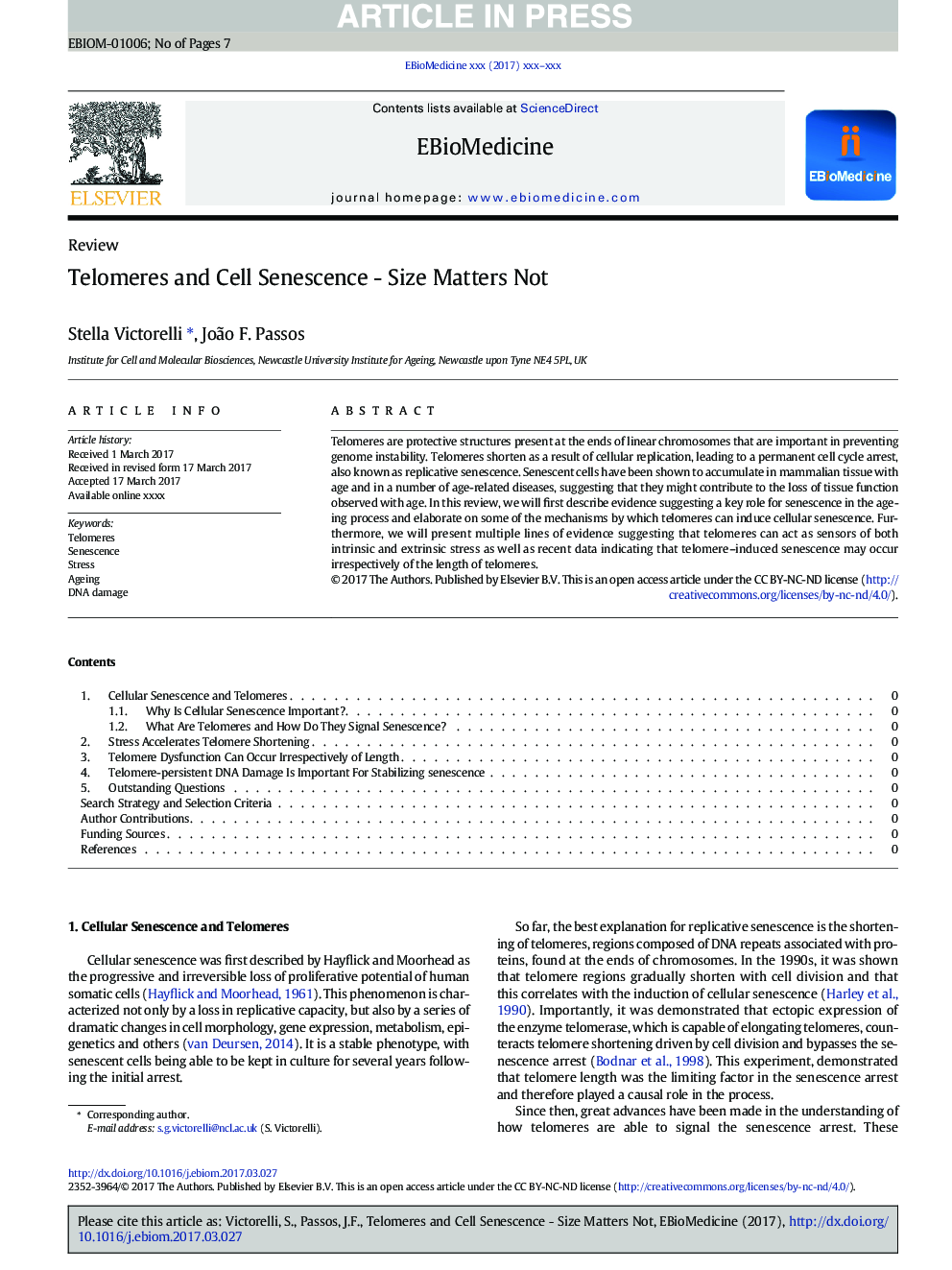| Article ID | Journal | Published Year | Pages | File Type |
|---|---|---|---|---|
| 8438113 | EBioMedicine | 2017 | 7 Pages |
Abstract
Telomeres are protective structures present at the ends of linear chromosomes that are important in preventing genome instability. Telomeres shorten as a result of cellular replication, leading to a permanent cell cycle arrest, also known as replicative senescence. Senescent cells have been shown to accumulate in mammalian tissue with age and in a number of age-related diseases, suggesting that they might contribute to the loss of tissue function observed with age. In this review, we will first describe evidence suggesting a key role for senescence in the ageing process and elaborate on some of the mechanisms by which telomeres can induce cellular senescence. Furthermore, we will present multiple lines of evidence suggesting that telomeres can act as sensors of both intrinsic and extrinsic stress as well as recent data indicating that telomere-induced senescence may occur irrespectively of the length of telomeres.
Related Topics
Life Sciences
Biochemistry, Genetics and Molecular Biology
Cancer Research
Authors
Stella Victorelli, João F. Passos,
